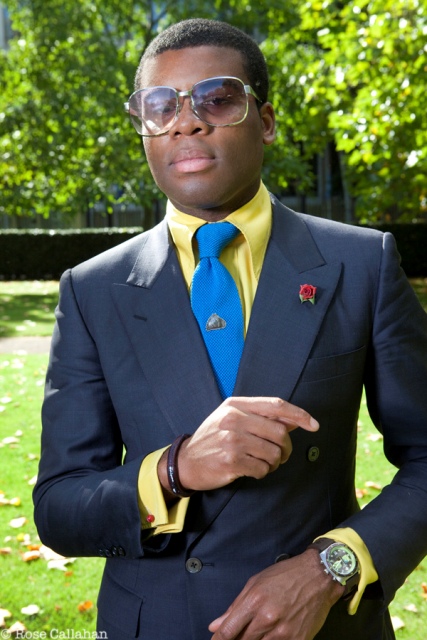Hollywood Golden Ager and naval hero
Douglas Fairbanks Jr., seen here in a 1940 portrait by Tino Costa, was the quiet perfectionist type when it came to matters of dress and deportment. However, as I've
noted in the past, obvious sobriety does not a boring approach make and the sophistication evinced by Fairbanks Jr.'s tasteful cuts and respectable palette will always be worth 300 of the overly adventurous
sprezzatura set any day
Still, as
ADG of Maxminimus and
Tintin of The Trad, who brought the upcoming auction of Fairbanks Jr.'s effects by
Doyle New York to the attention of many, have separately ruminated, it remains to be seen what sorts of prices quiet perfection fetches at auctions these days, whether the subject be famous or, in the case of
the scheming Bernie Madoff, infamous and more than a little reviled. I expect that the prices will generally trend within the estimates, excepting perhaps the precious metal accessories such as the platinum, gold, cabochon and diamond dress stud set, and interesting knick knacks such as the personally inscribed first edition Salvador Dali book
Included are some the pieces I'd be most interested in, were I in New York next Tuesday, 13th of September, and independently wealthy. Of course, it is not only the aesthetics of someone else's acquisitions that should be of interest; the stories behind them should hopefully be worth their prices at auction whenever one needs to spice up a conversation at the dinner table
McCULLEY, JOHNSTON. The Mark of Zorro. New York: Grosset & Dunlap, 1924. Inscribed by the author in 1925 to Douglas Fairbanks, Sr., and further inscribed and gifted at Christmas in 1951 from Mary Pickford to Fairbanks, Jr., with Pickford's tipped in Christmas card. Original gilt faux leather. Spine tips and corners rubbed, spine faded, with the bookplate of Douglas Fairbanks, Jr.
Fairbanks, Sr. famously played Zorro in the 1920 film, the year he married Mary Pickford. Using his affectionate nickname of "Jayar" for Junior, Pickford thought Fairbanks, Jr. "would like to have this book of your father's"
14kt. gold gufflinks
A selection of a navy pinstriped wool double-breasted suit, labeled Stovel & Mason Ltd. 32 Old Burlington Street, London W1., handwritten Sir Douglas Fairbanks December 1946 with a black silk woven with white oxford motif tie, labeled Crimplene; black herringbone wool Chesterfield coat, labeled Stovel & Mason Ltd. 32 Old Burlington Street, London W1., handwritten Sir Douglas Fairbanks January 1958; and a two-piece suit in black, white and burgundy Glen plaid, labeled P. Caraceni Roma, and handwritten Sir Douglas F 1953
14kt. gold cigarette case and lighter by Tiffany & Co. with a gold cigarette holder by Cartier
George III style mahogany partner's desk
The aforementioned dress studs and cufflinks set
9kt. gold dresser set from Finnegan's Ltd. of Bond Street, formerly owned by Douglas Fairbanks Sr.
***
Not included in the lots, these photographs are merely for illustrative purposes:
Pictured on the left and centre with Fairbanks Jr. are the late President Ronald Reagan and the late Cary Grant
With the late actress Virginia Field




































